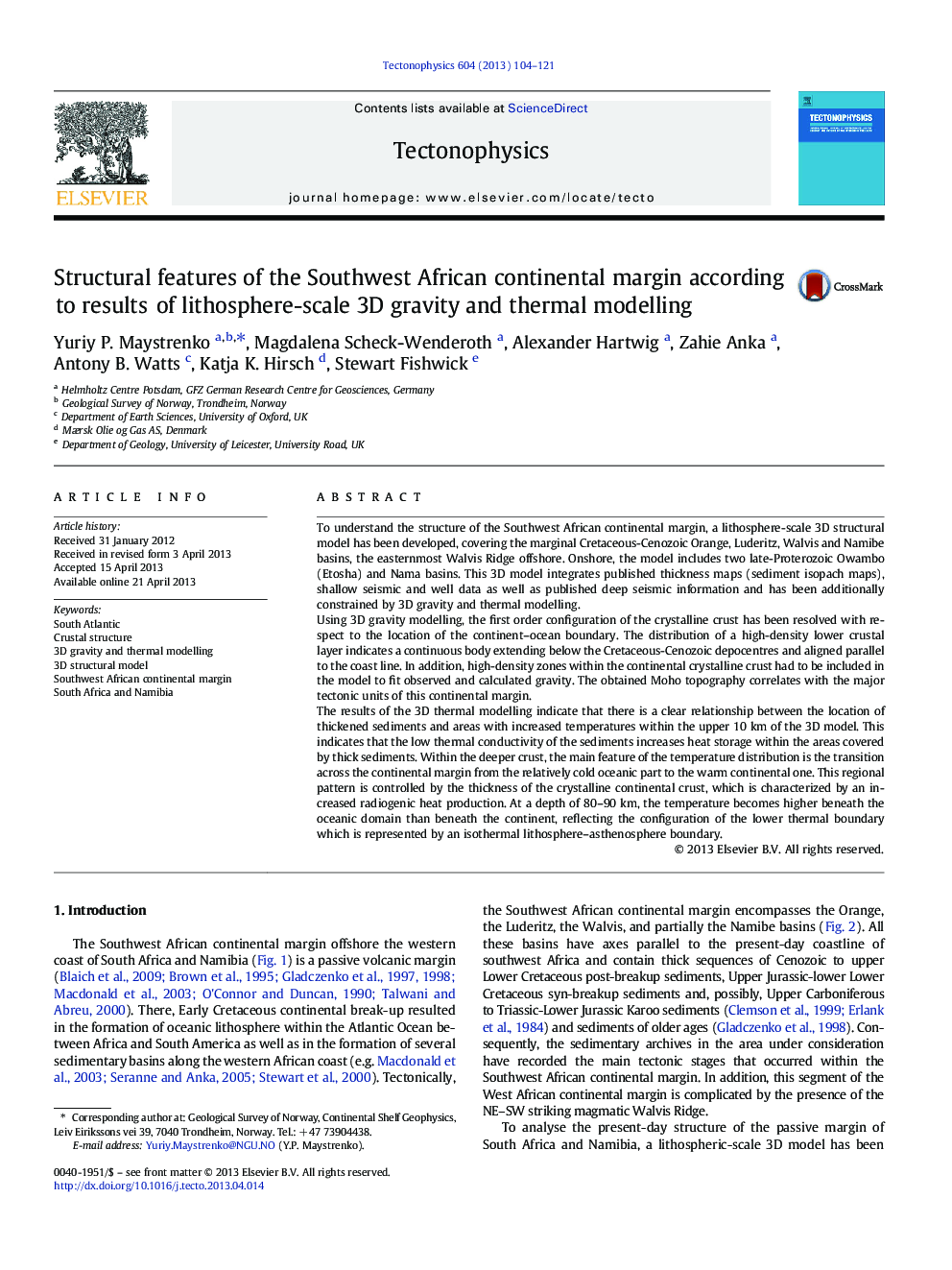| کد مقاله | کد نشریه | سال انتشار | مقاله انگلیسی | نسخه تمام متن |
|---|---|---|---|---|
| 4692155 | 1636783 | 2013 | 18 صفحه PDF | دانلود رایگان |

• 3D structural model of the Southwest African continental margin has been derived.
• 3D gravity modelling: the configuration of the crystalline crust has been resolved.
• 3D density model: presence of a high-density lower crustal layer along the margin.
• 3D thermal model predicts temperature distribution beneath the margin.
To understand the structure of the Southwest African continental margin, a lithosphere-scale 3D structural model has been developed, covering the marginal Cretaceous-Cenozoic Orange, Luderitz, Walvis and Namibe basins, the easternmost Walvis Ridge offshore. Onshore, the model includes two late-Proterozoic Owambo (Etosha) and Nama basins. This 3D model integrates published thickness maps (sediment isopach maps), shallow seismic and well data as well as published deep seismic information and has been additionally constrained by 3D gravity and thermal modelling.Using 3D gravity modelling, the first order configuration of the crystalline crust has been resolved with respect to the location of the continent–ocean boundary. The distribution of a high-density lower crustal layer indicates a continuous body extending below the Cretaceous-Cenozoic depocentres and aligned parallel to the coast line. In addition, high-density zones within the continental crystalline crust had to be included in the model to fit observed and calculated gravity. The obtained Moho topography correlates with the major tectonic units of this continental margin.The results of the 3D thermal modelling indicate that there is a clear relationship between the location of thickened sediments and areas with increased temperatures within the upper 10 km of the 3D model. This indicates that the low thermal conductivity of the sediments increases heat storage within the areas covered by thick sediments. Within the deeper crust, the main feature of the temperature distribution is the transition across the continental margin from the relatively cold oceanic part to the warm continental one. This regional pattern is controlled by the thickness of the crystalline continental crust, which is characterized by an increased radiogenic heat production. At a depth of 80–90 km, the temperature becomes higher beneath the oceanic domain than beneath the continent, reflecting the configuration of the lower thermal boundary which is represented by an isothermal lithosphere–asthenosphere boundary.
Figure optionsDownload as PowerPoint slide
Journal: Tectonophysics - Volume 604, 24 September 2013, Pages 104–121